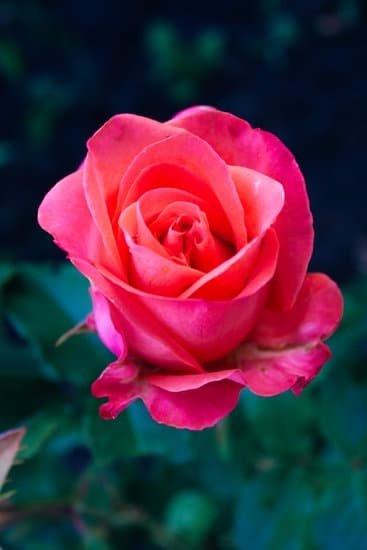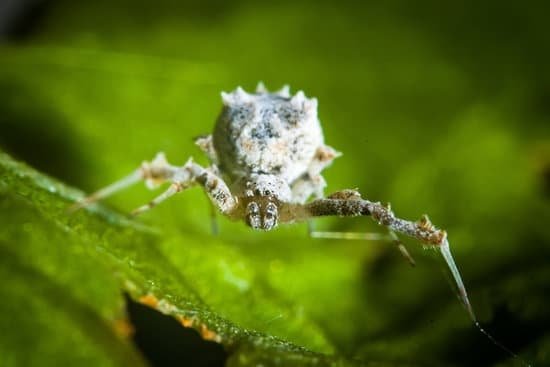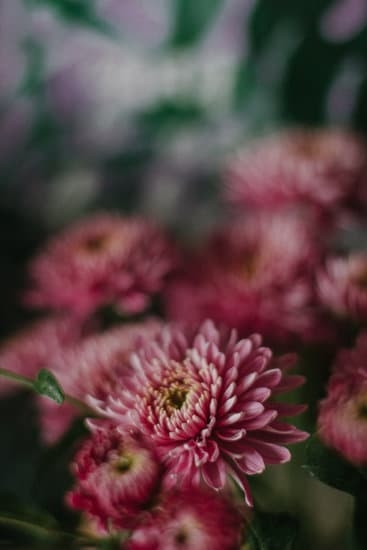Are you looking to add some greenery to your living space but don’t know where to start? Look no further than these DIY home gardening ideas.
Whether you have a spacious backyard or a small apartment balcony, there are plenty of creative and budget-friendly ways to bring nature into your home. From choosing the right plants for your space to eco-friendly garden projects, this article will guide you through the process of creating a beautiful and sustainable DIY garden.
When it comes to DIY home gardening, one of the first steps is choosing the right plants for your space. Not all plants thrive in every environment, so it’s essential to consider factors such as sunlight, temperature, and available space. Whether you’re interested in growing herbs on your kitchen windowsill or creating a lush outdoor oasis, there are plenty of options for every type of gardener.
For those with limited outdoor space, container gardening is an excellent option. Whether you have a small balcony or just want to add some greenery to your indoor spaces, container gardening allows you to get creative with plant placement and design.
From hanging planters to vertical gardens, there are countless ideas for maximizing your space while still enjoying the benefits of gardening. So roll up your sleeves and get ready to bring the beauty of nature into your home with these DIY home gardening ideas.
Choosing the Right Plants for Your Space
When it comes to starting your own DIY home gardening project, one of the most important steps is choosing the right plants for your space. Whether you have a large backyard or just a small balcony, there are plants that can thrive in any environment. Here are some tips for selecting the perfect plants for your garden:
- Consider the sunlight: Some plants require full sun, while others thrive in shaded areas. Take note of how much sunlight your space receives throughout the day and choose plants that will be able to flourish in those conditions.
- Think about water requirements: Some plants need to be watered frequently, while others are more drought-resistant. Take into consideration how much time you can dedicate to watering your garden and choose plants that align with your schedule.
- Check the soil type: Different plants have different soil requirements. Make sure to assess the type of soil in your garden and select plants that will be compatible with it.
By carefully considering these factors, you can ensure that the plants you choose for your DIY home gardening project will thrive and bring beauty to your outdoor or indoor space.
Once you have identified which plants are best suited for your space, it’s time to start planning out where you want them to go and how you want to display them. You might consider creating different zones in your garden based on sunlight exposure or grouping together plants with similar care requirements. With a little bit of creativity and strategic planning, you can create a beautiful and thriving garden that suits your specific environment.
Container Gardening Ideas for Small Spaces
Container gardening is a great option for those who have limited outdoor space. Whether you have a small balcony, patio, or even just a windowsill, there are plenty of creative ways to incorporate plants into your home. When choosing the right containers for your small space, consider using hanging baskets, vertical planters, or window boxes to make the most of your available area.
When it comes to selecting plants for your container garden, look for varieties that are well-suited for small spaces and can thrive in confined environments. Herbs such as basil, mint, and rosemary are excellent choices for beginners and do well in containers. For colorful blooms, consider petunias, pansies, or geraniums. If you’re interested in growing vegetables, tomatoes, peppers, and lettuce can all be successfully grown in containers.
In addition to traditional pots and planters, consider getting creative with your container choices. Upcycling old household items such as buckets, wooden crates, or even old tea tins can add a unique and personalized touch to your small space garden. By using unconventional containers, you can create a one-of-a-kind garden that reflects your personality and style.
| Container | Plants |
|---|---|
| Hanging Baskets | Petunias |
| Vertical Planters | Herbs (Basil/Rosemary) |
| Window Boxes | Pansies/Geraniums |
Creative DIY Planter Ideas
One of the most enjoyable aspects of DIY home gardening is getting creative with your planters. There are countless ways to add some personality and flair to your garden with unique and inventive planter ideas. From upcycling household items to creating living art pieces, there’s no limit to what you can achieve with a little ingenuity.
For those tight on space, vertical gardening is a fantastic option. You can create a vertical garden using old pallets, hanging shoe organizers, or even repurposed gutters. This not only saves space but also adds an eye-catching element to your outdoor or indoor space.
Another fun DIY planter idea is to create a miniature fairy garden within a pot. This involves adding tiny plants, figurines, and tiny decorative elements like pebbles and mini fences to create an enchanting display. These whimsical gardens are especially popular among children and can be a great way to introduce them to the joys of gardening.
When it comes to eco-friendly DIY garden projects, using recycled materials for planters is both sustainable and creative. Old tires, wine barrels, tin cans, and even old furniture can be transformed into unique planters that add character to your garden while reducing waste.
| Planter Idea | Description |
|---|---|
| Vertical Gardens | Create space-saving gardens using repurposed materials |
| Fairy Gardens | Create charming miniature gardens in pots with figurines and small plants |
| Recycled Materials | Transform old materials like tires and cans into unique planters |
Tips for Successful Indoor Gardening
Indoor gardening can be a great way to bring the beauty of nature into your home, especially for those with limited outdoor space. Whether you’re a seasoned gardener or just starting out, here are some tips for successful indoor gardening:
1. Choose the Right Plants: Not all plants thrive indoors, so it’s important to choose ones that are well-suited for indoor conditions. Some popular choices for indoor gardening include snake plants, pothos, and spider plants, which require minimal maintenance and can tolerate lower light levels.
2. Provide Adequate Light: Proper lighting is essential for indoor plants to thrive. Place your plants near windows where they can receive adequate sunlight, or consider using grow lights to supplement natural light if needed.
3. Use the Right Containers: When it comes to indoor gardening, the right containers are key. Make sure your pots have drainage holes to prevent overwatering, and consider using decorative planters or hanging baskets to add visual interest to your indoor garden.
4. Water Carefully: Overwatering is a common mistake in indoor gardening, so be sure to water your plants only when the top inch of soil feels dry to the touch. The frequency of watering will depend on factors such as the type of plant, temperature, and humidity levels in your home.
5. Monitor Humidity Levels: Many indoor plants prefer higher humidity levels than what’s typically found indoors. Consider placing a humidifier near your plants or misting them regularly to create a more suitable environment for their growth.
By following these tips and experimenting with different plants and growing methods, you can create a thriving indoor garden that adds beauty and tranquility to your living space while enjoying the many benefits that come with it.
Eco-Friendly DIY Garden Projects
As people become more conscious of their environmental impact, eco-friendly DIY garden projects have gained popularity among home gardeners. These projects not only contribute to a sustainable lifestyle but also provide a sense of satisfaction in creating a greener and healthier environment. Here are some eco-friendly DIY garden project ideas to help you get started.
One popular eco-friendly DIY garden project is composting. Instead of throwing away organic waste such as fruit peels, vegetable scraps, and coffee grounds, you can turn them into nutrient-rich compost for your garden. Composting not only reduces waste in landfills but also provides your plants with natural fertilizers to promote healthy growth.
Another eco-friendly DIY garden project is rainwater harvesting. By collecting rainwater from your gutters or roof into a barrel or tank, you can reduce your reliance on tap water for watering your plants. This not only conserves water but also reduces your utility bills. Additionally, using untreated rainwater is beneficial for your plants as it does not contain the chemicals present in tap water.
Lastly, incorporating native plants into your garden is an eco-friendly DIY gardening idea that promotes biodiversity and supports the local ecosystem. Native plants are adapted to the local climate and require less maintenance, water, and pesticides compared to non-native species. By choosing native plants for your garden, you can create a sustainable habitat for beneficial insects and wildlife while conserving resources.
By implementing these eco-friendly DIY garden projects, you can contribute to a healthier planet while creating a beautiful and sustainable garden space right at home. Embracing these environmentally conscious practices in your gardening journey will not only benefit the environment but also inspire others to do the same.
Low-Maintenance Garden Design Ideas
When it comes to home gardening, not everyone has the time or energy to maintain an elaborate garden. Low-maintenance garden design ideas are the perfect solution for those looking to enjoy a beautiful outdoor space without the hassle of constant upkeep. With these simple and easy-to-maintain ideas, you can still enjoy a thriving garden without spending hours on end tending to it.
Choose Low-Maintenance Plants
One of the most important aspects of creating a low-maintenance garden is choosing the right plants. Look for native plants that are well-suited to your climate and require minimal care. Drought-tolerant plants, such as succulents and ornamental grasses, are also great options for low-maintenance gardens. By selecting the right plants from the start, you can significantly reduce the amount of time and effort needed to keep your garden looking its best.
Implement Mulching Techniques
Mulching is a great way to reduce weed growth and conserve moisture in the soil, ultimately cutting down on maintenance time. Organic mulches like wood chips or bark help suppress weeds while also improving soil quality as they decompose. By implementing mulching techniques in your garden, you can create a low-maintenance environment that requires less frequent watering and weeding.
Limit Lawn Areas
Lawns require regular mowing, fertilizing, and watering, making them high-maintenance features in a garden. To minimize maintenance needs, consider reducing lawn areas in favor of low-maintenance alternatives such as ground covers, gravel beds, or native plantings. This not only reduces the amount of time spent on lawn care but also creates more diverse and interesting landscapes within your garden.
With these low-maintenance garden design ideas, creating and maintaining a beautiful outdoor space becomes much more manageable. By strategically choosing plants, implementing mulching techniques, and minimizing lawn areas, you can enjoy a thriving garden with minimal effort – leaving you more time to relax and appreciate your DIY home gardening efforts.
Budget-Friendly DIY Garden Upgrades
If you’re looking to spruce up your garden without breaking the bank, there are plenty of budget-friendly DIY garden upgrades that can make a big impact. From creating your own garden furniture to adding decorative touches, there are endless possibilities for enhancing your outdoor space on a budget.
Upcycled Garden Décor
One of the most budget-friendly ways to upgrade your garden is by upcycling items you already have or finding inexpensive secondhand items. Old tires can be painted and turned into colorful planters, while tin cans can be transformed into charming lanterns. Look for creative ways to repurpose old furniture, like turning an old ladder into a vertical herb garden or using pallets to create a rustic flower bed.
DIY Pathways and Borders
Creating defined pathways and borders in your garden can instantly elevate its appearance. Instead of splurging on expensive materials, consider using cost-effective options such as gravel, mulch, or even reclaimed bricks or stones. You can also get creative with DIY stepping stones made from concrete molds or mosaic designs for a unique touch.
Customized Garden Structures
Adding customized structures to your garden doesn’t have to break the bank. Consider building simple trellises for climbing plants using wooden stakes and chicken wire, or constructing raised beds using affordable lumber. With a little creativity and some basic carpentry skills, you can personalize your garden with these custom structures without spending a fortune.
With these budget-friendly DIY garden upgrades, you can transform your outdoor space into a beautiful and inviting oasis without exceeding your financial limits. By getting crafty and utilizing inexpensive materials, you can achieve stunning results while enjoying the satisfaction of knowing that you did it all yourself – making it truly diy home gardening ideas come to life.
Conclusion and Next Steps for Your DIY Home Gardening Journey
In conclusion, delving into the world of DIY home gardening can be a fulfilling and rewarding experience for anyone. Whether you have limited space, a strict budget, or simply want to explore your creative side, there are countless ideas and options to suit your needs. By choosing the right plants for your space, experimenting with container gardening, utilizing creative planter ideas, and incorporating eco-friendly projects into your garden, you can create a beautiful and sustainable oasis right at home.
As you embark on your DIY home gardening journey, it’s important to remember that indoor gardening is also possible with the right tips and techniques. With low-maintenance design ideas and budget-friendly upgrades, you can transform any space into a thriving garden. The key is to start small and gradually expand as you become more confident in your abilities.
So, whether you’re new to gardening or have some experience under your belt, don’t be afraid to try out some new DIY home gardening ideas – who knows what hidden green thumb talents you may discover along the way. The possibilities are endless when it comes to creating a beautiful outdoor or indoor garden that reflects your personality and style. So go ahead and let your creativity bloom with these inspiring DIY home gardening ideas.
Frequently Asked Questions
How Do You Make a Simple Garden?
Making a simple garden can be achieved by choosing a suitable location with adequate sunlight and good soil drainage. Decide on the type of plants you want to grow, prepare the soil, plant your seeds or seedlings, water regularly, and maintain your garden by weeding and fertilizing as needed.
How Do You Start a Mini Garden at Home?
Starting a mini garden at home is a great way to bring nature indoors. You can begin by selecting a container or pot that suits the size of the plants you want to grow. Make sure it has drainage holes, fill it with quality potting mix, plant your chosen herbs or flowers, and place it in a sunny spot.
How Do You Make a Small Garden for Cheap?
Creating a small garden for cheap is possible by using recycled materials such as old tires, pallets, or containers as planters. You can also start plants from seeds instead of buying mature plants and focus on low-cost options like annual flowers and vegetables rather than more expensive perennials or shrubs.
With some creativity and smart planning, you can make an affordable but beautiful garden space.

Welcome to my gardening blog! I am passionate about plants and enjoy sharing my knowledge and experiences with others. In this blog, I will write about everything related to gardening, from tips on how to get started to updates on my own garden projects.





